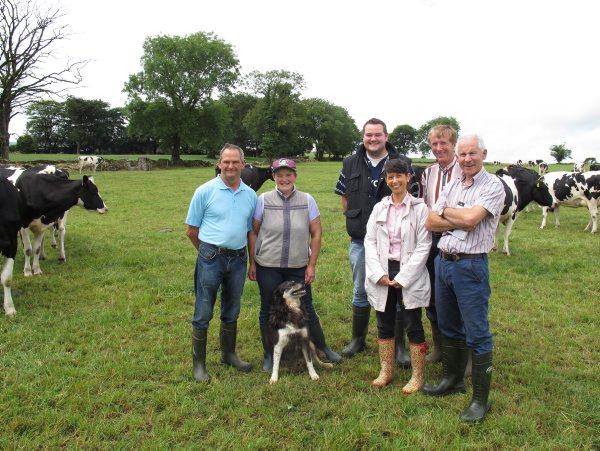Ann Jennings is clear that the benefits of milk recording to identify high somatic cell counts (SCC) is absolutely essential.
She said: “We use milk recording results to highlight the cows that have elevated cell counts and to give us a history of mastitis on each cow.
“We also, of course, get the milk composition results so we see what cows are clearly making more money for our business.”
Noel and Ann Jennings are Bandon suppliers and son Jeremy works with Munster AI but is also very much involved with the spring milking dairy farm that has a small number of autumn calving cows.
When the business started, a Hereford stock bull was used to breed the cows and replacements were purchased from local dairy farmers.
Then the Jennings started to use AI and started to breed their own replacements. These replacements were bred to an Angus bull but now all replacements are put in calf to AI also, so the system has changed from buying stock to having options on selling stock or more culling.
There are recording jars in the Jennings parlour so Noel said if they see bloody milk, clots or a cow off form, she is checked immediately.
If a case of mastitis is identified, the quarter is stripped out completely and a Bovaclox milking tube is used for at least three milkings.
Noel also said that they have had some success with using an injection of Noroclav earlier rather than later when the infection is identified.
FACT FILE
Farming system: in 2012 milking 49 cows in mainly spring milk production supplying Bandon Co-op, 91 acres farmed (37ha), family labour, 6,097 litres (1,341 gals) per cow delivered at 4.13% fat and 3.36% protein.
Parlour: 10 unit herringbone.
SCC results: average 105,000 for 2012 with six months averaging less than 100,000.
TBC results: average 8,000 for 2012 ranging from 4,000 to 10,000.
Ann’s comment: “We dry wipe teats unless they are dirty, draw out quarters if there is a problem and teat dip after milking.”
Milk quality tip: “When a fresh cow calves, we make sure to adhere to the withdrawal days and maybe give an extra day out of the tank if necessary.”
Judge’s comment: “Breeding your own replacements ensures you have quality stock coming through each year which gives the business options but it also lowers the risk from a herd health point of view.”






 This is a subscriber-only article
This is a subscriber-only article









SHARING OPTIONS: